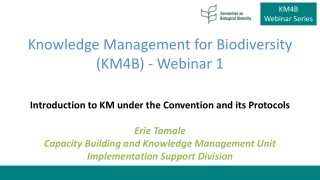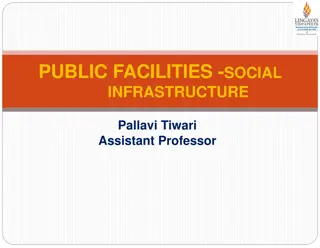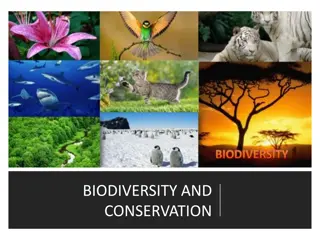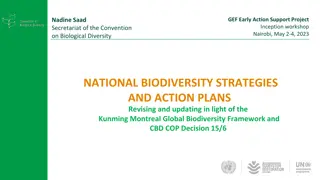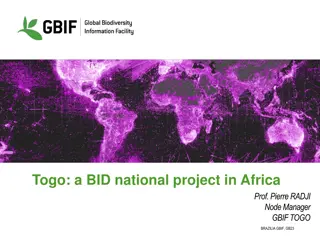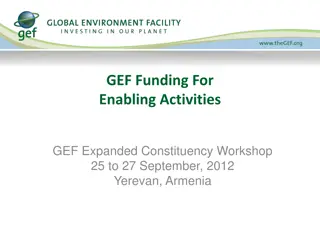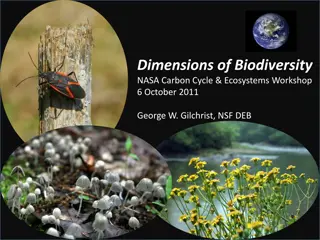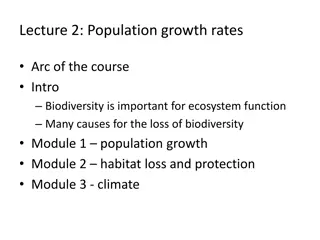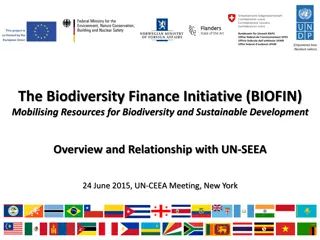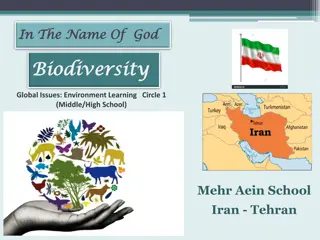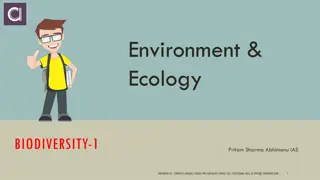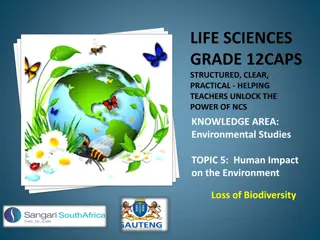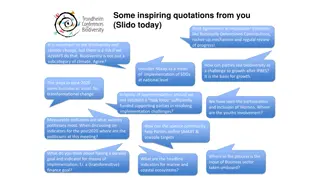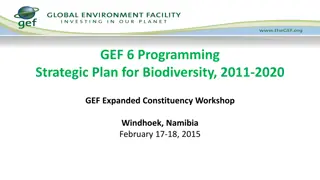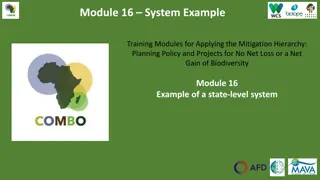
Regional Biodiversity Monitoring Efforts: Collaboration and Engagement
Explore how to establish regional biodiversity monitoring initiatives through partnerships, interdisciplinary teams, and public engagement strategies. Identify potential regional partners, build critical mass, and present efforts effectively to gain public support.
Download Presentation

Please find below an Image/Link to download the presentation.
The content on the website is provided AS IS for your information and personal use only. It may not be sold, licensed, or shared on other websites without obtaining consent from the author. If you encounter any issues during the download, it is possible that the publisher has removed the file from their server.
You are allowed to download the files provided on this website for personal or commercial use, subject to the condition that they are used lawfully. All files are the property of their respective owners.
The content on the website is provided AS IS for your information and personal use only. It may not be sold, licensed, or shared on other websites without obtaining consent from the author.
E N D
Presentation Transcript
Regionalization Breakout Group NASA Biodiversity and Ecological Forecasting Team Meeting May 8, 2009
Question 1 What might a regional biodiversity monitoring effort look like? Focus is international Applied research based on regional needs while simultaneously addressing NASA research questions. Feedback mechanism to take into account potential efforts that are of global impact that could be regionalized environmental regulation frameworks in the region(e.g. convention on climate change) Partner with universities is easiest; find researchers that share interest and passion; but also governments, NGOs and private sector Need to build on the knowledge that is already there In those regions, we can identify the gaps Strong capacity building component NSF-like to encourage partnerships and interdisciplinary teams True partnerships
Question 2 Who can we work with? Identify regional partnership opportunities with organizations that are already working at the regional level. In addition to scientists/researchers, include local and non-traditional partners (e.g. fisherman)
Question 3 In building new partnerships, with what organizations should NASA look to partner? This question requires further research GOFC network/SERVIR liaison GLOBE - educational component Marine Biological Corridor Secretariats Intergovernmental Oceanographic Commission Interamerican Institute for Global Change Research Development agencies and banks
Question 4 How do you build critical mass? Shorter term Scientific exchange Regional biodiversity monitoring as part of ROSES call Web 2.0 Longer term (like growing a crop) Education Personal relationships/scientific diplomacy
Question 5 How can we best present regional biodiversity monitoring efforts to the public and gain their buy-in? Not by emails and electronic newsletters Other: radio, TV, movies Leverage successful response to high visibility events Physical infrastructure, like SERVIR as a showcase

